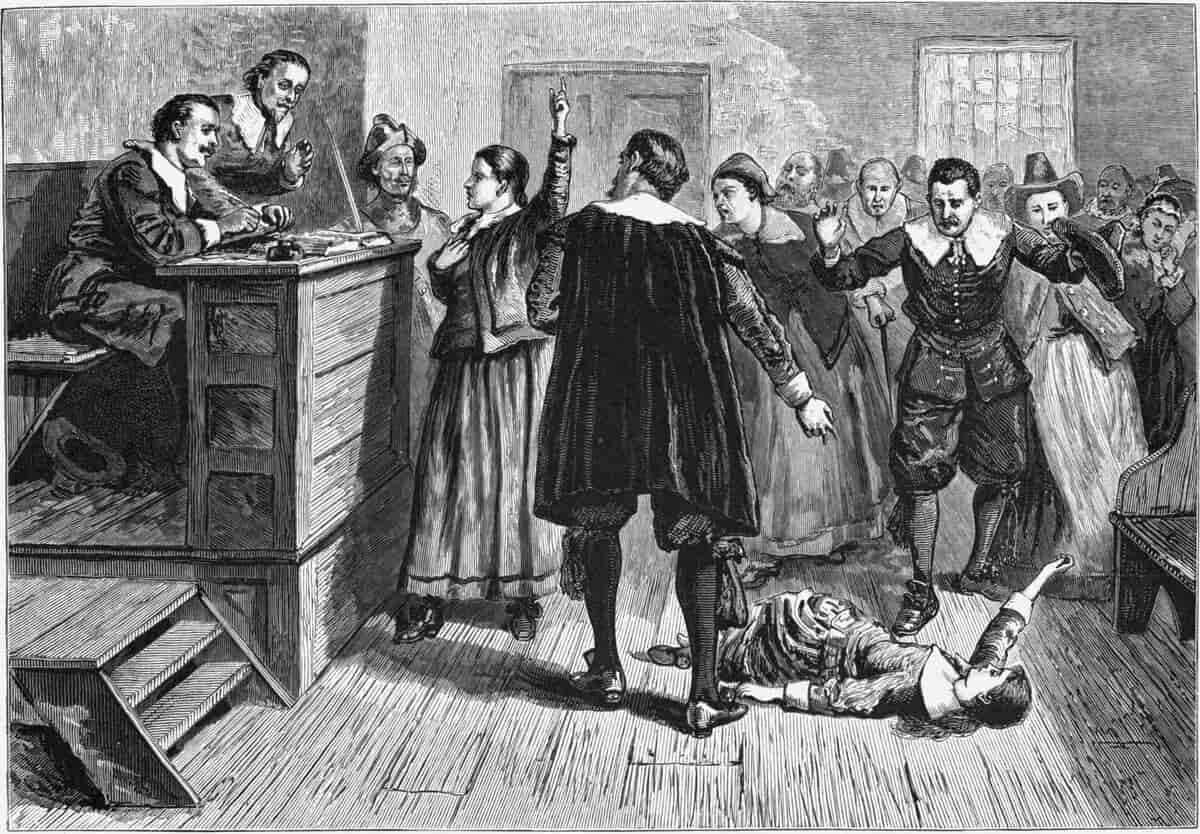Now that we are officially in “Spooky Season,” and the 11th grade English students have finished reading The Crucible, I thought it would be interesting to share five of the most common misconceptions about the Salem Witch Trials.
For those of you who might not know, the Salem Witch Trials took place from 1692-1693 in Salem, Massachusetts. In the trials, many of the townspeople were accused of witchcraft. In total, around 150 people were accused. 54 of them confessed and 19 received the death penalty. This was a very tragic event and there are many myths surrounding it that are simply not true.
- They were real witches
Although witchcraft related religions such as paganism and voodoo (which are nothing like what most people think witchcraft is) have existed for centuries, it is more than likely that none of those accused during the Salem Witch Trials were real witches. The accusations were all false.
The Salem Witch Trials were really a mass hysteria. A hysteria is “an old-fashioned term for a disorder characterized by neurological symptoms often accompanied by exaggeratedly or inappropriately emotional behavior, originally attributed to disease or injury of the nervous system and later thought to be functional or psychological in origin” (Oxford Languages). In simpler terms, it is when people have an outburst of fear or emotion that is exaggerated. The Salem Witch Trials were a mass hysteria because the entire town was involved. Other examples of mass hysteria include the 2016-2017 Killer Clown sightings and the Dancing Plague of 1518.
People were accused in the Salem Witch Trials for a few different reasons. For one, that particular season in Salem was very wet. The moist weather caused their wheat to grow moldy. Consuming moldy food can cause hallucinations. So, the people of Salem might have thought that they were really “seeing spirits” even though they were not. Another reason why some were accused was out of spite. Neighbors accused neighbors in order to take their land.
Religion played a big role in the accusations as well. Before the 1700 and 1800’s, religion and government went extremely closely together, especially with Christianity. So, if someone was seen as “Un-Christian like” it was very easy to accuse them of witchcraft. The first three people to be accused of witchcraft were Tituba, Sarah Good, and Sarah Osbourne. All three were seen un-Christian in a way. Tituba was a slave of African and indigenous descent. Sarah Good was a homeless woman. Sarah Osbourne often didn’t attend Church services.
So, no, there weren’t really witches in Salem.
- The accused were all women and human
Usually, when people think of witches and witch trials, they think of women. But, in the Salem Witch Trials both men, women, and animals were accused. Some of the most notable women accused were Rebecca Nurse, Elizabeth Proctor, and Martha Corey. Some notable men were John Proctor and George Jacobs.
It was believed that witches could “cast out their spirits” into animals or “familiars.” Due to this belief, some animals like dogs were accused and executed.
- Those convicted were burned at the stake
The Salem witches were mostly hanged, not burnt at the stake. One man, Giles Corey was crushed to death. Some died in jail. Burning at the stake was only done in Europe.
- Witch trials only happened in Salem
In North America, witch trials happened in Salem and other places like Pennsylvania and Maryland. They were very common in Europe, happening in Germany, France, Switzerland, Sweden, Scotland, and Italy. Most took place in Germany and France.
Some of the lesser known witch trials were the Valais Trials in France and Switzerland, the Torsåker Trials in Sweden, the Trier and Fulda Trials in Germany, the Pendle Trials in England, and the North Berwick Trials in Scotland. I find the Torsåker and North Berwick Trials to be the most interesting. The Torsåker Trials (1674-1675) were terrifying and strangely similar to Salem. Like Salem, children were the main accusers. But unlike in Salem, the children were forced to give testimonies through abuse. They were whipped, threatened to be baked in an oven, and forced to swim in freezing lakes. The accused witches were said to have kidnapped the children and brought them to a Pagan festival. Torsåker is the largest witch trial that occurred in Sweden, with 71 accused witches. In the trials in North Berwick (1590-1592), King James VI of Scotland, was caught in a terrible storm, which he blamed on witchcraft. He then decided that it was his job to get rid of witchcraft and those who practiced it. 70 people were accused of witchcraft, the first being Gilly Duncan. Some of the accused were actually Scottish nobility. The trials had such a lasting effect that Shakespeare wrote parts of Macbeth based off of them.
Something else that interested me was learning that Europe had werewolf trials as well as witchcraft trials.
- Witch Trials ended with Salem
Even though there is much more religious tolerance in the world today, people that are “different” are still seen as evil. For example, look at McCarthyism in the 1950s and the “Satanic Panic” that occurred in the 80s, carried into the nineties, and even some parts into today.
McCarthyism is also known as the second red scare. In the age of McCarthyism, many Americans were accused of being communists and put on trial. This tarnished their reputations. None of McCarthy’s cases were plausible and people were wrongfully accused. One of the accused was actually Arthur Miller, author of The Crucible. His own experiences inspired him to write the play.
In the “Satanic Panic,” many people became paranoid about satanic cults committing abuse. They were most centered on abuse, especially in preschools and daycares. But it put a stain on witchcraft. A lot of the hysteria was fed by increased crime rates, the AIDS epidemic, and the way the media (mostly in the horror genre) was portraying witchcraft. Alternative teenagers were greatly targeted by the prejudice. The popular game “Dungeons & Dragons” was attributed to devil worship as well as rock/heavy metal music and goth fashion styles. These prejudices actually led to a lot of wrongful homicide convictions.


